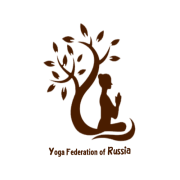

Yoga in Russiais the practice of yoga , including modern yoga as exercise , in Russia. The actor Constantin Stanislavski made extensive use of Hatha Yoga in his system for training actors in the 1910s. Yoga was banned in the Soviet Union , but grew rapidly after glasnost in the 1990s. B. K. S. Iyengar visited Russia and helped to create a network of 50 yoga studios. Since then, yoga has diversified, with many forms of yoga available across the country. Yoga is one of the six orthodox philosophical schools of Hinduism .There are a broad variety of yoga schools, practices, and goals ] in Hinduism , Buddhism , and Jainism and there are four paths or types of yoga: Karma yoga , Kriya yoga , Bhakti yoga , and Jnana yoga .Research studies have shown that traditional yoga systems that include breathing exercises and asanas or postures, chants, and meditation can reduce stress and improve immunity and lung functions.Traditional forms and modern methods of yoga are practiced worldwide.
The practice of yoga has been thought to date back to pre- vedic Indian traditions, possibly in the Indus valley civilization around 3000 BCE. Yoga is mentioned in the Rigveda ,and also referenced in the Upanishads ,though it most likely developed as a systematic study around the 5th and 6th centuries BCE, in ancient India's ascetic and Srama?a movements.The chronology of earliest texts describing yoga practices is unclear, varyingly credited to the Upanishads .The Yoga Sutras of Patanjali date from the 2nd century BCE,and gained prominence in the West in the 20th century after being first introduced by Swami Vivekananda . Hatha yoga texts began to emerge sometime between the 9th and 11th century with origins in tantra . Yoga gurus from India introduced yoga to the West following the success of Vivekananda's adaptation of yoga without asanas in the late 19th and early 20th centuries.The term "yoga" in the Western world often denotes a modern form of hatha yoga and yoga as exercise , consisting largely of the asanas . Outside India, it has developed into a posture-based physical fitness, stress-relief and relaxation technique .Traditional yoga, however, includes physical exercise, meditation, and spirituality.Yoga has its own epistemological method , which assumes the ontology and metaphysics of the closely correlated Samkhya darsana.
HISTORICAL DEVELOPMENT:
The first Russian translation of the Bhagavad Gita was published in 1788 on the orders of the empress Catherine the Great . The Bhagavad Gita presents a synthesis of Hindu ideas about dharma and the yogic ideals of moksha . The text covers Jnana yoga , Bhakti yoga , Karma yoga , and Raja yoga incorporating ideas from the Samkhya philosophy.
Agni Yoga , said to mean "Mergence with Divine Fire", was created in exile in 1920 by the Russians Nicholas Roerich and Helena Roerich , influenced by the theosophist Helena Blavatsky .Their successors include Victor Skumin .
A shadowier figure, William Walker Atkinson ( Yogi Ramacharaka ) translated yoga texts into Russian, but they were all burnt during the Russian Revolution of 1917, and yoga, especially yoga teaching, was forbidden in the USSR .